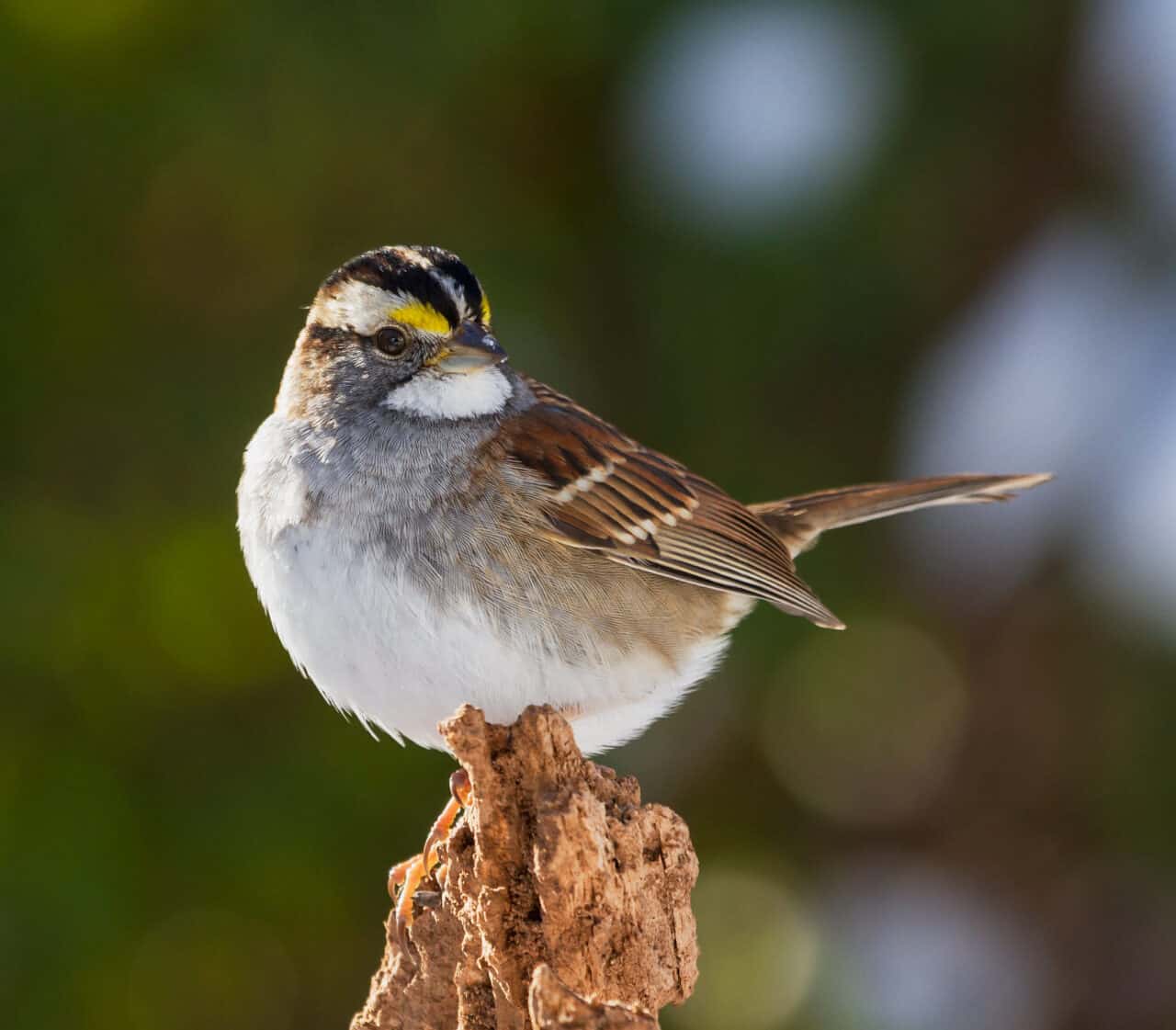Columbus Audubon thanks Laura Dornan and the Canton Audubon Society for their kind permission to republish this article.
One of the joys of backyard birding on a wintry day in Ohio is seeing White-throated Sparrows at your ground feeders. This attractive and easy-to-identify sparrow breeds in the coniferous and mixed forests of Canada, New England, northern Great Lakes region and northern Pennsylvania, then heads to the southern states for the winter. Ohio is on the northern edge of their winter habitat and they can be found here from late fall to early spring. In winter the preferred habitat is thickets, overgrown fields, some wooded parks and suburbs, and backyard feeders that have some components of these habitats nearby.
Like most sparrows, they are primarily ground-feeders and forage for small seeds, fruit, buds and insects, using a two-footed kick on the ground to search under leaflitter and also searching low-hanging trees and shrubs. At feeders, their favorite seed is millet; they also feed on sunflower.
The most distinguishing characteristic of the White-throated Sparrow is, well–the white throat, which is out-lined in black. White-throated Sparrows (WTSP) can be easily confused with White-crowned Sparrows (WCSP). Both species sport crown stripes of either black and white (bright) or brown and tan (dull). WTSP also sports a yellow spot between the eye and bill (supraloral), not always very obvious.
There is a bit of confusion about what the two color morphs mean so I hope to clear up the confusion. First of all, the two combinations do not indicate the sex of the bird in either species. In White-crowned, all adults, male and female, have black and white crowns, while immature birds have the duller tan crowns. In White-throated, the different color morphs do not depict age or sex. The color morphs appear equally in both sexes and while immature birds of both morphs are somewhat duller, there is still a distinct difference between bright and dull color morphs.
These forms are maintained through a process called “negative assortative mating” or more simply put– “Opposites Attract”. A male of one color almost always mates with a female of the other color. Because bright birds are more aggressive and dull birds are more attentive to nestlings, this combination becomes a recipe for success.
Male birds of both bright and dull morphs sing and bright females sing. Dull females sing only very rarely. WTSP sing almost year-round but in fall and early winter, the singing is occasional. Then on a sunny, warm day in mid to late February, I will begin to hear the beautiful, melodic, somewhat mournful “O Sam Peabody, peabody, peabody” on a regular basis. (When the birds arrive in Canada by late April and May the song is recognized as “O sweet Canada, Canada, Canada”.)
Female and first-year birds tend to move further south than adult males in winter. This enables the adult males to be the first to return to the breeding grounds to set up their territories. They usually arrive one to two weeks before the females. Pair bonds last throughout the season but not year to year. The female builds the cup-shaped nest on the ground alone, using grasses, twigs, and pine needles and lining it with deer fur. The pale-blue or greenish-blue eggs with purple or chestnut speckles (usually 4) are incubated for 12 days and fledging takes place at 7 to 12 days. The young depend on both parents for about two more weeks.
White-throated Sparrows are relatively common but are in decline. They are one of the most frequent victims of window collisions.
Sources: American Bird Conservancy ‘Bird of the Week’, 3/25/2021, abcbirds.org.; Stokes Field Guide to the Birds of North America, Donald & Lillian Stokes; Birds of Ohio, Jim McCormac; Cornell Laboratory Birds of the World.




